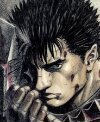Create a Spectacular Grass Text Effect in Photoshop
-
Posts
-
New update! A gift coupon system has been added. Now you can activate gift coupons directly in the bot: Open "My Profile" Tap "Activate gift coupon" Enter the coupon code The balance will be topped up automatically. Received a coupon? Activate it and top up your balance. Buy Telegram Stars with maximum benefit in our bot
-
New update! A gift coupon system has been added. Now you can activate gift coupons directly in the bot: Open "My Profile" Tap "Activate gift coupon" Enter the coupon code The balance will be topped up automatically. Received a coupon? Activate it and top up your balance. Buy Telegram Stars with maximum benefit in our bot
-
New update! A gift coupon system has been added. Now you can activate gift coupons directly in the bot: Open "My Profile" Tap "Activate gift coupon" Enter the coupon code The balance will be topped up automatically. Received a coupon? Activate it and top up your balance. Buy Telegram Stars with maximum benefit in our bot
-
Dear users! We are happy to announce a major update of our bot! What’s new: Long-term number rental You can now rent virtual numbers for a long period (hours, days, or months)! This is perfect for those who need constant access to a number to receive SMS from various services. Number history A new feature allows you to view all your rented numbers in one place! You can: • See the full history of all numbers (instant and long-term) • View all received SMS codes • Return to active numbers to receive additional SMS • See the status of each number Gift coupon system You can now activate gift coupons directly in the bot! Just go to your profile and click “Activate gift coupon” — your balance will be topped up automatically! Chinese language Full support for the Chinese language has been added! The bot is now available in three languages: Russian, English, and Chinese. Switching languages has become even more convenient. Improved rental process Before purchasing a number, detailed service information is now displayed: • Service name • Ability to receive repeated SMS • Rental duration • Cost This will help you make a more informed decision before renting. Quick rental The “Virtual numbers (SMS)” button has now been renamed to “Quick rental” for greater clarity and convenience. Go to the SMS service
-
This is a bump: https://databay.com/
-
-
Topics










Recommended Posts
Create an account or sign in to comment
You need to be a member in order to leave a comment
Create an account
Sign up for a new account in our community. It's easy!
Register a new accountSign in
Already have an account? Sign in here.
Sign In Now